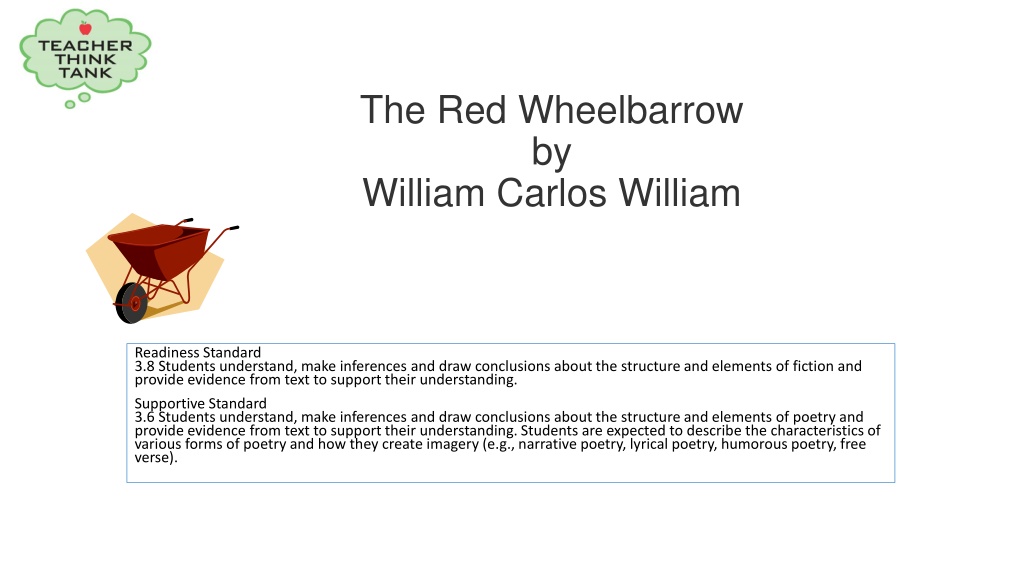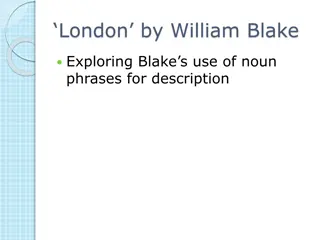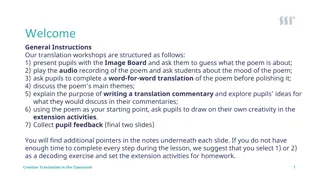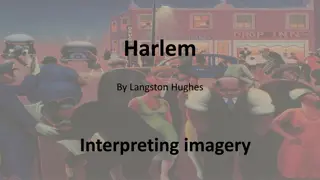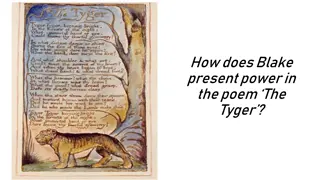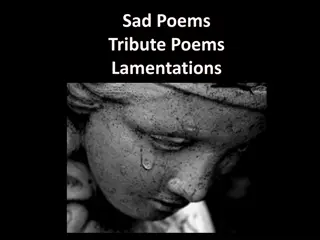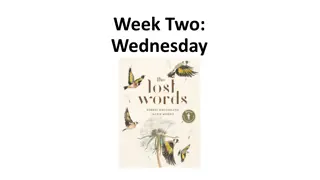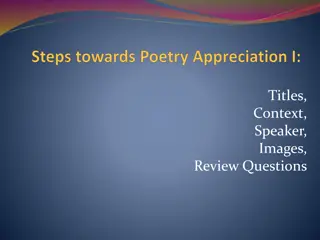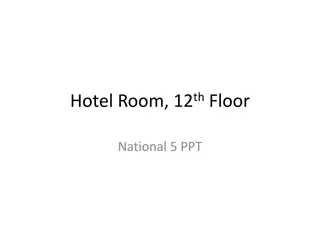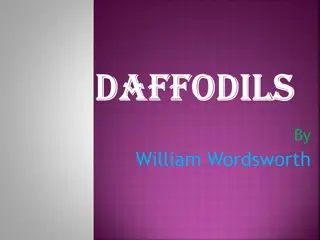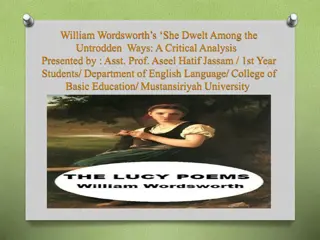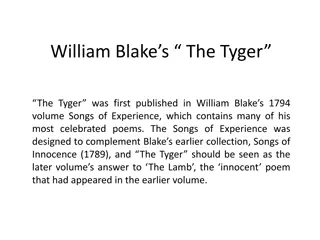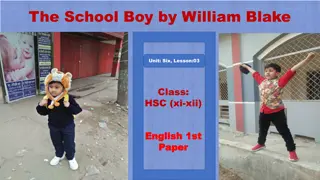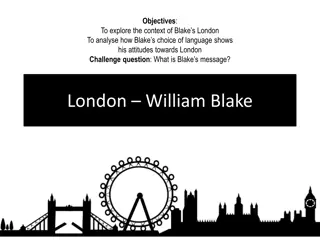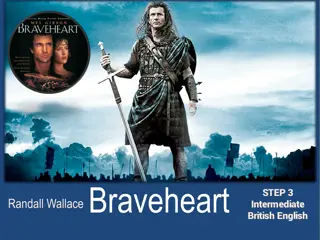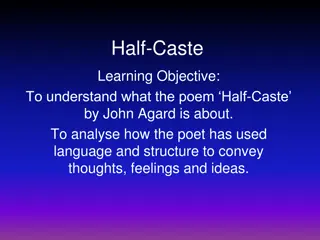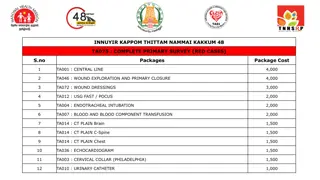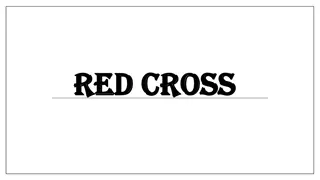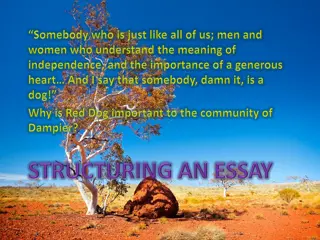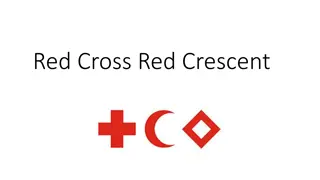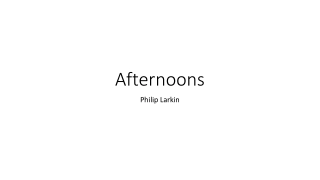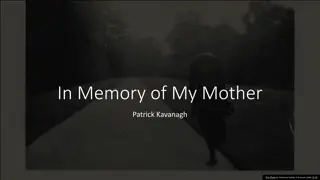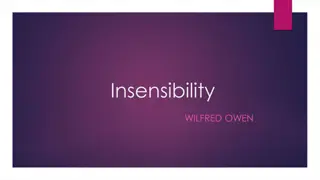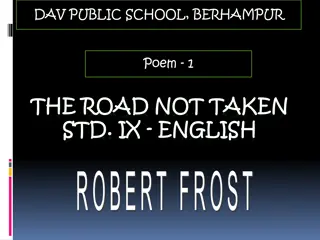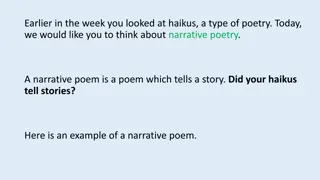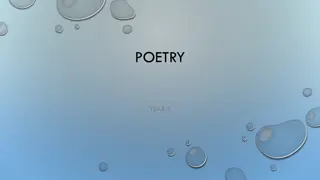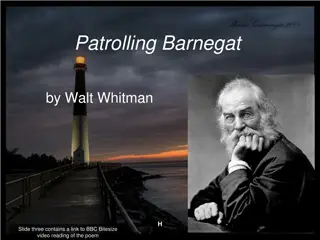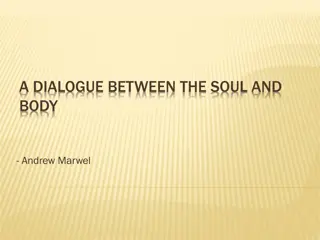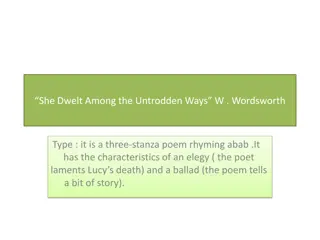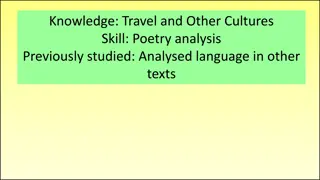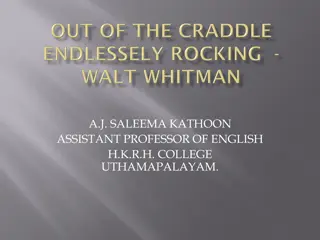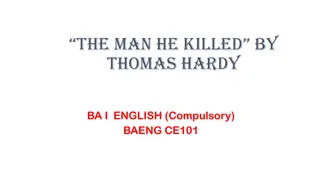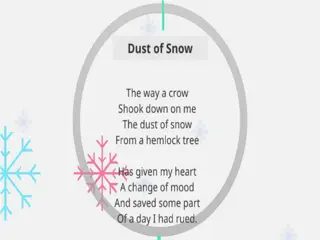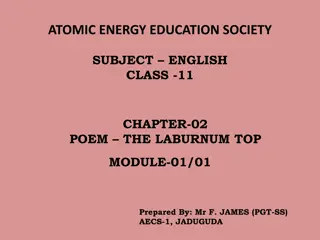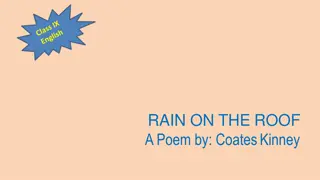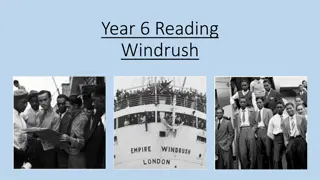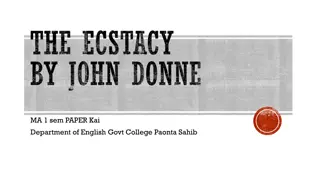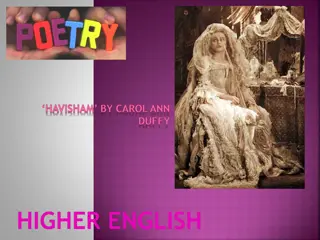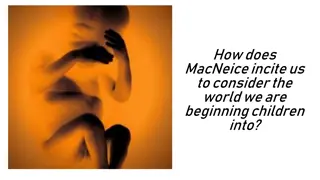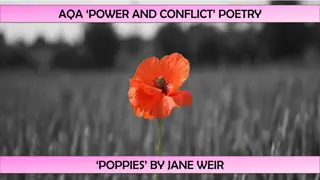Analyzing "The Red Wheelbarrow" Poem by William Carlos Williams
Analyzing elements of poetry in William Carlos Williams' "The Red Wheelbarrow," students explore free verse structure, imagery creation, and understanding the speaker's focus on the significance of a red wheelbarrow and white chickens through inference and contextual analysis.
Download Presentation

Please find below an Image/Link to download the presentation.
The content on the website is provided AS IS for your information and personal use only. It may not be sold, licensed, or shared on other websites without obtaining consent from the author. Download presentation by click this link. If you encounter any issues during the download, it is possible that the publisher has removed the file from their server.
E N D
Presentation Transcript
The Red Wheelbarrow by William Carlos William Readiness Standard 3.8 Students understand, make inferences and draw conclusions about the structure and elements of fiction and provide evidence from text to support their understanding. Supportive Standard 3.6 Students understand, make inferences and draw conclusions about the structure and elements of poetry and provide evidence from text to support their understanding. Students are expected to describe the characteristics of various forms of poetry and how they create imagery (e.g., narrative poetry, lyrical poetry, humorous poetry, free verse).
so much depends upon a red wheel barrow glazed with rain water beside the white chickens.
3.6A describe the characteristics of various forms of poetry and how they create imagery (e.g., narrative poetry, lyrical poetry, humorous poetry, free verse) so much depends upon a red wheel 3 barrow glazed with rain water 6 beside the white chickens. This poem is an example of a free verse poem because A) it tells a story B) has a funny ending C) it does not rhyme and it does not follow standard form D) it describes feelings
3.2B ask relevant questions, seek clarification, and locate facts and details about stories and other texts and support answers with evidence from text so much depends upon a red wheel 3 barrow glazed with rain water 6 beside the white chickens. What is the speaker talking about in this poem? A) the speaker is describing a red wheelbarrow B) the speaker is talking about rain C) the speaker is talking about the importance of a wheel barrow D) the speaker is talking about a farm
3.4B use context to determine the relevant meaning of unfamiliar words or distinguish among multiple meaning words and homograph so much depends upon a red wheel 3 barrow glazed with rain water 6 beside the white chickens. In line 4 the word glazed means A) hit B) touched C) form a smooth, wet, shine D) form a sticky cover
3.6 understand, make inferences and draw conclusions about the structure and elements of poetry and provide evidence from text to support their understanding. Students are expected to describe the characteristics of various forms of poetry and how they create imagery (e.g., narrative poetry, lyrical poetry, humorous poetry, free verse). Fig. 19D make inferences about text and use textual evidence to support understanding The speaker uses one broken sentence mainly to A) describe a red wheel barrow B) describe a farm C) describe a raining day D) describe a picture or scene so much depends upon a red wheel 3 barrow glazed with rain water 6 beside the white chickens.
so much depends upon a red wheel 3 barrow glazed with rain water 6 beside the white chickens. 3.6 understand, make inferences and draw conclusions about the structure and elements of poetry and provide evidence from text to support their understanding. Students are expected to describe the characteristics of various forms of poetry and how they create imagery (e.g., narrative poetry, lyrical poetry, humorous poetry, free verse). Fig. 19D make inferences about text and use textual evidence to support understanding By the end of the poem the reader realizes that the speaker used words such as red and white A) to help the reader visualize a picture or painting B) to help the reader like the poem C) to describe a wheel barrow D) to describe a chicken
